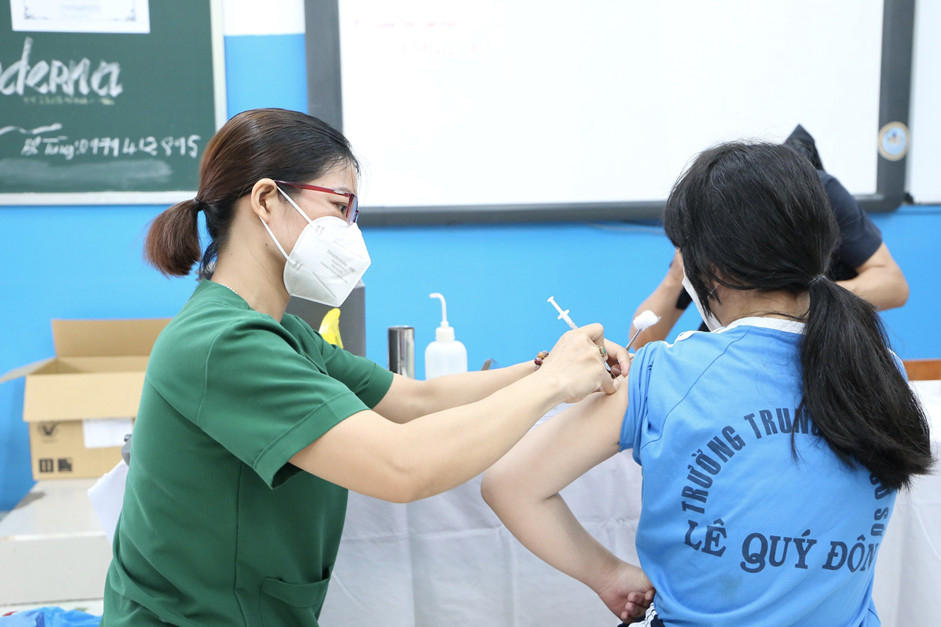What is Diphtheria? Diphtheria prevention measures under the law in Vietnam
Below are the diphtheria prevention measures according to the Monitoring and Prevention Guidelines for Diphtheria issued with Decision 3593/QD-BYT in 2020.

What is Diphtheria? Diphtheria prevention measures under the law in Vietnam (Image from the Internet)
1. What is Diphtheria?
According to the Monitoring and Prevention Guidelines for Diphtheria issued alongside Decision 3593/QD-BYT in 2020, diphtheria is an acute infectious disease classified in Group B. The disease is caused by toxin-producing diphtheria bacteria (Corynebacterium diphtheriae), consisting of four biotypes: Gravis, Mitis, Intermedius, and Belfanti. These biotypes only differ in colony morphology characteristics and some biochemical traits, but they do not differ in clinical presentation or transmission capabilities.
The resistance of diphtheria bacteria outside the body is very high; they withstand cold drying, especially when protected by mucus.
On fabrics such as blankets, screens, clothes, and pillows, they can survive for 30 days; on cups, glasses, spoons, bowls, chopsticks, and toys, they can survive for several days; in milk and drinking water, they live for 20 days; in corpses, they can live for 2 weeks.
Diphtheria bacteria are sensitive to physical and chemical factors. Under direct sunlight, the bacteria will be killed after a few hours. At a temperature of 58 degrees Celsius, they survive for 10 minutes and are quickly killed at boiling temperature. They are also easily destroyed by common disinfectants.
2. Diphtheria prevention measures under the law in Vietnam
The diphtheria prevention measures according to the Monitoring and Prevention Guidelines for Diphtheria issued alongside Decision 3593/QD-BYT in 2020 are as follows:
* Specific Prevention Measures
Diphtheria vaccination is the most important and effective prevention measure, especially ensuring good implementation of diphtheria vaccination within the Expanded Program on Immunization in Vietnam.
** For children under 1 year old starting vaccinations
- Basic doses administration:
Administer 3 basic doses of vaccines containing full-dose diphtheria components, usually combined in 5-in-1 or 6-in-1 vaccines.
+ The 1st dose at 2 months old.
+ The 2nd dose at 3 months old.
+ The 3rd dose at 4 months old.
It is best to complete the 3rd dose before 6 months old. Ensure a vaccination rate above 95% in all communes/wards in the Expanded Program on Immunization.
- Booster doses:
+ 4th dose: Administer full-dose diphtheria vaccine at 18 to 24 months old.
+ 5th dose: Administer reduced-dose diphtheria vaccine at 4 to 7 years old.
+ 6th dose: Administer reduced-dose diphtheria vaccine at 9 to 15 years old.
** For children over 1 year old and adults who have not been previously vaccinated or do not remember the vaccination history
- Basic doses administration:
Administer 3 basic doses of vaccines containing diphtheria components in appropriate amounts for age and as guided by the manufacturer (full-dose diphtheria vaccine or reduced-dose diphtheria vaccine).
+ The 1st dose as soon as possible.
+ The 2nd dose at least 4 weeks after the 1st dose.
+ The 3rd dose at least 6 months after the 2nd dose.
- Booster doses:
Administer 2 booster doses of vaccines containing diphtheria components in appropriate amounts for age and as guided by the manufacturer (full-dose diphtheria vaccine or reduced-dose diphtheria vaccine). The booster doses should be at least 1 year apart.
* Non-specific Prevention Measures
** For local authorities and health agencies:
- Educate the community, especially in areas where the disease is endemic, where there are old epidemic outbreaks, and where vaccination rates are low, about diphtheria and preventive measures.
- Develop an annual proactive diphtheria prevention plan. Enhance monitoring measures at all levels, especially in old epidemic areas, high-risk areas, and areas with low vaccination rates.
- Maintain high diphtheria vaccination rates in the community according to the schedule of the Expanded Program on Immunization.
- Prepare vaccines, supplies, and chemicals for prophylaxis when outbreaks occur.
** For the public:
- Get diphtheria vaccinations fully and on schedule as prescribed.
- Wash hands regularly with soap; cover mouth when coughing or sneezing; maintain personal hygiene, including nose and throat care daily; limit contact with individuals who are sick or suspected to be sick.
- Ensure good hygiene in homes, daycares, and classrooms, keeping them well-ventilated, clean, and with adequate lighting.
- Ensure food hygiene, eat cooked food, drink boiled water, and use clean utensils.
- Immediately report to health authorities if there are signs of illness or suspected illness to get isolated, examined, tested, and treated promptly.
- Comply strictly with taking prophylactic antibiotics and diphtheria vaccinations as prescribed and required by health authorities in epidemic areas.
- Key word:
- diphtheria
- Vietnam
- Cases of land rent exemption and reduction under the latest regulations in Vietnam
- Economic infrastructure and social infrastructure system in Thu Duc City, Ho Chi Minh City
- Regulations on ordination with foreign elements in religious organizations in Vietnam
- Increase land compensation prices in Vietnam from January 1, 2026
- Determination of land compensation levels for damage during land requisition process in Vietnam
- Who is permitted to purchase social housing according to latest regulations in Vietnam?
-

- Number of deputy directors of departments in Vietnam ...
- 15:04, 05/03/2025
-

- Cases ineligible for pardon in Vietnam in 2025
- 14:43, 05/03/2025
-

- Decree 50/2025 amending Decree 151/2017 on the ...
- 12:00, 05/03/2025
-

- Circular 07/2025 amending Circular 02/2022 on ...
- 11:30, 05/03/2025
-

- Adjustment to the organizational structure of ...
- 10:34, 05/03/2025
-

- Notable new policies of Vietnam effective as of ...
- 16:26, 11/04/2025
-
.Medium.png)
- Notable documents of Vietnam in the previous week ...
- 16:21, 11/04/2025
-
.Medium.png)
- Notable documents of Vietnam in the previous week ...
- 16:11, 02/04/2025
-
.Medium.png)
- Notable new policies of Vietnam to be effective ...
- 16:04, 02/04/2025
-
.Medium.png)
- Notable new policies of Vietnam effective from ...
- 14:51, 21/03/2025

 Article table of contents
Article table of contents
